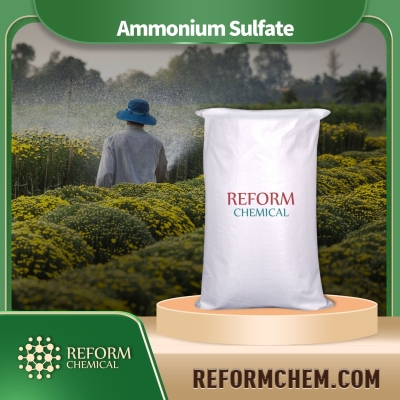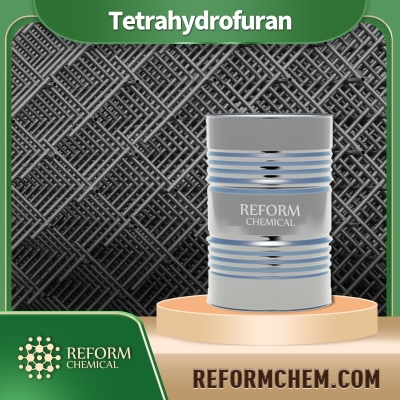-
Categories
-
Pharmaceutical Intermediates
-
Active Pharmaceutical Ingredients
-
Food Additives
- Industrial Coatings
- Agrochemicals
- Dyes and Pigments
- Surfactant
- Flavors and Fragrances
- Chemical Reagents
- Catalyst and Auxiliary
- Natural Products
- Inorganic Chemistry
-
Organic Chemistry
-
Biochemical Engineering
- Analytical Chemistry
-
Cosmetic Ingredient
- Water Treatment Chemical
-
Pharmaceutical Intermediates
Promotion
ECHEMI Mall
Wholesale
Weekly Price
Exhibition
News
-
Trade Service
In recent years, the structural adjustment of China's pesticide industry has achieved remarkable results.
In the process of the overall development level, profits have grown against the trend, showing a "one flower alone" trend
.
After going through the "throttle" period of transformation and reform, under the supervision of the strictest environmental protection law, pesticide companies have accelerated the pace of mergers and reorganizations, eliminated outdated production capacity, actively implemented the zero-growth action of pesticide use, and continuously improved the innovation capabilities of independent research and development, and further accelerated This helped China's pesticide brands take root in the international market
.
Production capacity presents new changes along with policy adjustments.
In the recent years of development of the pesticide industry, changes in output not only reflect the overall trend, but also an intuitive manifestation of the changes in a single pesticide variety
.
After rapid growth, slight growth, and stabilization, 2015 was not only a difficult year for the operation of the pesticide industry, but also a turning point for the development of the pesticide industry.
Not only did production enthusiasm decline, but the output of the three major types of pesticides also declined; in 2016, the "downturn" "And "environmental protection", it can be said that the two-way pressure from the demand side and the production side runs through the year
.
The unpredictable changes in the market have led to serious overcapacity, resulting in a decline in market prices and reduced corporate profit margins.
With the deepening of environmental protection policies and the accelerated pace of pesticide supply-side reform, the production capacity ratio of the three major pesticide varieties may show new changes
.
Bio-pesticide spawns new profit growth points The pesticide industry gradually came out of the downturn last year, loss-making companies have decreased, and the production mode of enterprises has also quietly changed, and the emerging bio-pesticide business has brought new profit growth points
.
In comparison, the growth rate of the total profit of biochemical pesticides and microbial pesticides was much faster than that of chemical pesticides.
Chemical pesticides fell by 3.
6%, while biochemical pesticides and microbial pesticides increased strongly by 23.
7%
.
According to data from the National Bureau of Statistics, in 2016, the national pesticide industry's main business income reached 330.
867 billion yuan, an increase of 5.
2% year-on-year, and the total profit reached 24.
587 billion yuan, an increase of 6.
2% year-on-year
.
The total profit of chemical crude drugs increased by 4.
7% year-on-year, and biochemical and microbial pesticides increased by 17.
9% year-on-year
.
Mergers and reorganizations have accelerated the pace of industry integration.
It is undeniable that China's pesticide industry has gradually emerged from the downturn, and companies have gathered together for warmth and seek opportunities for great alliances and development
.
At present, the number of enterprises above designated size has increased, their strength has increased, and industry mergers and reorganizations have accelerated
.
The accelerated merger and reorganization of the pesticide industry in China has benefited from the industry's continued structural adjustment and technological innovation
.
On the one hand, the increase in domestic environmental protection thresholds, environmental inspections and industrial parks have inhibited the start of some non-compliant enterprises, leaving market and profit margins for large enterprises, and gradually reducing the proportion of highly toxic pesticides in use
.
On the other hand, enterprises have strengthened their awareness of technological innovation subjectively, and a number of new products and new processes have continued to emerge
.
Whether it is industry integration, profit generation, export trade, mergers and reorganization, etc.
, China's pesticide industry is forging ahead
.
In the process of the overall development level, profits have grown against the trend, showing a "one flower alone" trend
.
After going through the "throttle" period of transformation and reform, under the supervision of the strictest environmental protection law, pesticide companies have accelerated the pace of mergers and reorganizations, eliminated outdated production capacity, actively implemented the zero-growth action of pesticide use, and continuously improved the innovation capabilities of independent research and development, and further accelerated This helped China's pesticide brands take root in the international market
.
Production capacity presents new changes along with policy adjustments.
In the recent years of development of the pesticide industry, changes in output not only reflect the overall trend, but also an intuitive manifestation of the changes in a single pesticide variety
.
After rapid growth, slight growth, and stabilization, 2015 was not only a difficult year for the operation of the pesticide industry, but also a turning point for the development of the pesticide industry.
Not only did production enthusiasm decline, but the output of the three major types of pesticides also declined; in 2016, the "downturn" "And "environmental protection", it can be said that the two-way pressure from the demand side and the production side runs through the year
.
The unpredictable changes in the market have led to serious overcapacity, resulting in a decline in market prices and reduced corporate profit margins.
With the deepening of environmental protection policies and the accelerated pace of pesticide supply-side reform, the production capacity ratio of the three major pesticide varieties may show new changes
.
Bio-pesticide spawns new profit growth points The pesticide industry gradually came out of the downturn last year, loss-making companies have decreased, and the production mode of enterprises has also quietly changed, and the emerging bio-pesticide business has brought new profit growth points
.
In comparison, the growth rate of the total profit of biochemical pesticides and microbial pesticides was much faster than that of chemical pesticides.
Chemical pesticides fell by 3.
6%, while biochemical pesticides and microbial pesticides increased strongly by 23.
7%
.
According to data from the National Bureau of Statistics, in 2016, the national pesticide industry's main business income reached 330.
867 billion yuan, an increase of 5.
2% year-on-year, and the total profit reached 24.
587 billion yuan, an increase of 6.
2% year-on-year
.
The total profit of chemical crude drugs increased by 4.
7% year-on-year, and biochemical and microbial pesticides increased by 17.
9% year-on-year
.
Mergers and reorganizations have accelerated the pace of industry integration.
It is undeniable that China's pesticide industry has gradually emerged from the downturn, and companies have gathered together for warmth and seek opportunities for great alliances and development
.
At present, the number of enterprises above designated size has increased, their strength has increased, and industry mergers and reorganizations have accelerated
.
The accelerated merger and reorganization of the pesticide industry in China has benefited from the industry's continued structural adjustment and technological innovation
.
On the one hand, the increase in domestic environmental protection thresholds, environmental inspections and industrial parks have inhibited the start of some non-compliant enterprises, leaving market and profit margins for large enterprises, and gradually reducing the proportion of highly toxic pesticides in use
.
On the other hand, enterprises have strengthened their awareness of technological innovation subjectively, and a number of new products and new processes have continued to emerge
.
Whether it is industry integration, profit generation, export trade, mergers and reorganization, etc.
, China's pesticide industry is forging ahead
.






